Gardening Guide, Growing Sugar Snap Peas
Have you ever had a fresh from the garden sugar snap pea?
If you’ve ever grown your own peas then you know what I mean by that fresh taste, you just can’t get the same taste from store-bought or even farm stand peas.
Did you also know that peas aren’t that hard to grow? Just just need to know how.
With these growing sugar snap pea tips below you can grow peas in your own backyard and enjoy that fresh from the garden taste.
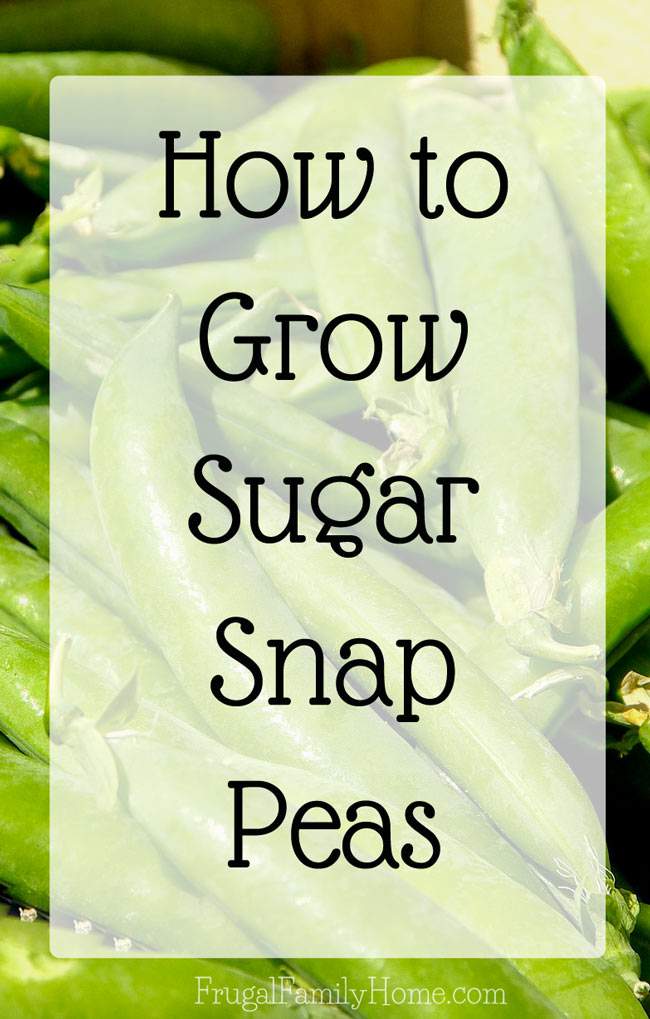
How to Grow Your Own Sugar Snap Peas
Why do I grow peas? Well, one reason is because I can plant them so early. Plus growing sugar snap peas isn’t hard with the right conditions.
Peas are a cool weather plant, meaning they like the cooler weather, better than the warmer weather. Here where I live, that means I can usually plant them right around President’s Day. Well, that is if the soil is dry enough.
The Three Main Types of Peas and Their Hardiness
There are three main types of peas, sweet pea, sugar snap pea and snow pea. Sweet Peas are full-sized peas that are in an inedible pod, these are what might be called shelling pea.
Snow Peas are peas with an edible pod, but the peas inside are usually small and not full sized.
Sugar Snap peas are peas that have an edible pod and have full-sized peas inside. Sugar snap peas are the kind that we grow at our house. We like them the best.
Peas can be grown in zones 3-11 on the USDA hardiness scale. We live in zone 8 and can usually plant our peas as early as the middle of February to the first of April.
If you live in a cooler climate planting times might be later. If you are in a warmer climate peas might be best added to your winter garden.
When to Plant Sugar Snap Peas
I usually try to plant sugar snap peas right around the middle of February. But if it’s too wet, peas don’t like wetness, I will plant them as late as the first of April.
The ideal time for planting peas is about 4-6 weeks before the last frost. The soil needs to be around 45 degrees.
Peas can be a little picky about germinating. If the soil is too cold or too hot they won’t germinate well. Plus too much rain can waterlog them.
To avoid germination problems, I like to sprout the sugar snap peas in the house before planting them in the garden. You don’t want to start the peas inside and then transplant them as they don’t do very well transplanted. You just want to sprout them.
It’s best to place the seeds in a wet paper towel and then leave it in a warm spot. I usually place the peas on a wet paper towel and fold the paper towel in half to fully enclose the peas.
Then I place the paper towel in a zipper bag and place the bag on top of the refrigerator. This keeps them just the right temperature to sprout. Once the peas have sprouted and have a few small roots. I transplant them to the garden.
This way if we get a lot of rain, the seeds don’t become waterlogged and just rot instead of sprouting. Plus I don’t have to fight the birds to leave them alone.
If you want a continuous harvest, plant new peas every few weeks, from late spring to early fall. Although I find they don’t really do well in temperatures above 70 degrees. I’ve tried to grow them all season long and they tend to struggle in the hot summer.
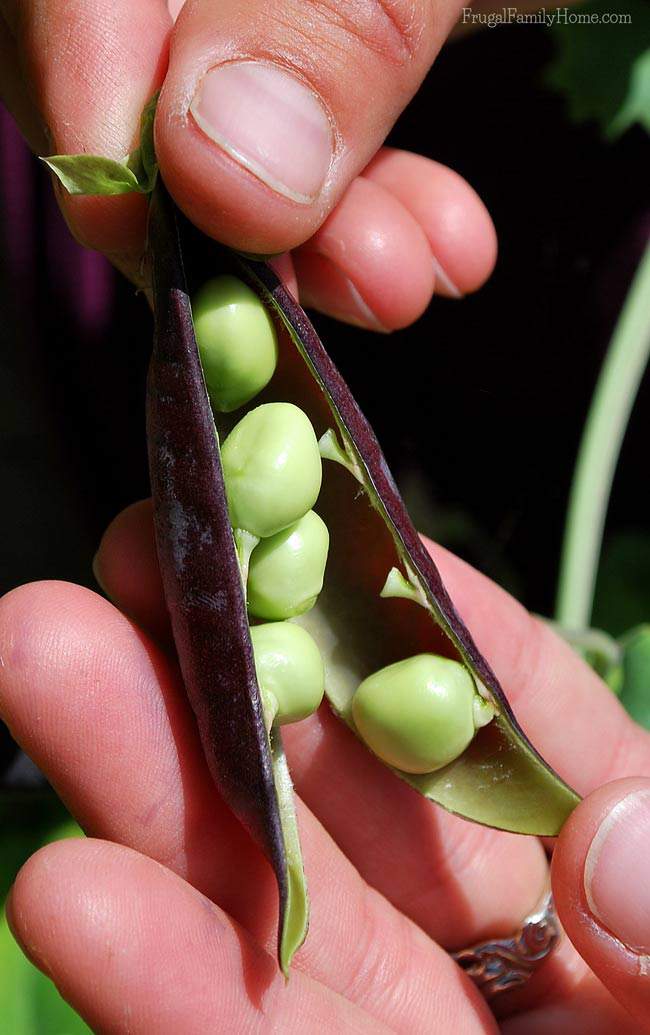
Growing Sugar Snap Peas or any Peas for that Matter
Sugar Snap Peas can be grown in full sun or in part sun. I’ve had good luck growing mine in full sun for about 6 hours a day. They seem to grow very nicely and produce well.
Peas grow best in well-drained soil. If your soil is clay-like be sure amend the soil to make it loamier, so it drains better.
When planting the pea seeds, in cooler weather plant the pea seeds about 1 inch deep. In warmer weather plant them a little deeper, about 1 1/2 to 2 inches deep.
We plant our peas using the square foot method. I divide an area of the garden into square foot squares and plant the seeds closely together. For peas, the square foot method recommends 8 pea plants per square foot.
For pole sugar snap peas, I will plant 4 on one side near the trellis and 4 on the other side of the square near the other side of the trellis. It seems to work well. You can also grow them in rows along a fence for support.
If you will be growing bush peas, just divide the seeds up evenly in the square foot. They don’t really need much support. I usually use a piece of decorative fencing to give them something to hold onto. Short pieces of bamboo will also work.
Peas don’t like too much water. Water about 1/2 inch per week until they bloom and then 1 inch per week until the pods fill out.
Harvesting Sugar Snap Peas
Be sure to pick the peas often. Pick daily to encourage new pods to develop. Use two hand when picking, one to hold and pull on the pea, the other to support the vine.
After harvesting peas can be stored in the refrigerator for about 5 days. I usually keep mine in a paper sack. If you want longer storage, it’s best to freeze them. Here’s how to freeze sugar snap peas.
Sugar snap peas are best prepared right after harvesting. The sugar turns to starch just a few hours after harvest. So try to harvest them close to eating. If you need some ideas for how to prepare sugar snap peas, here’s a few for you.
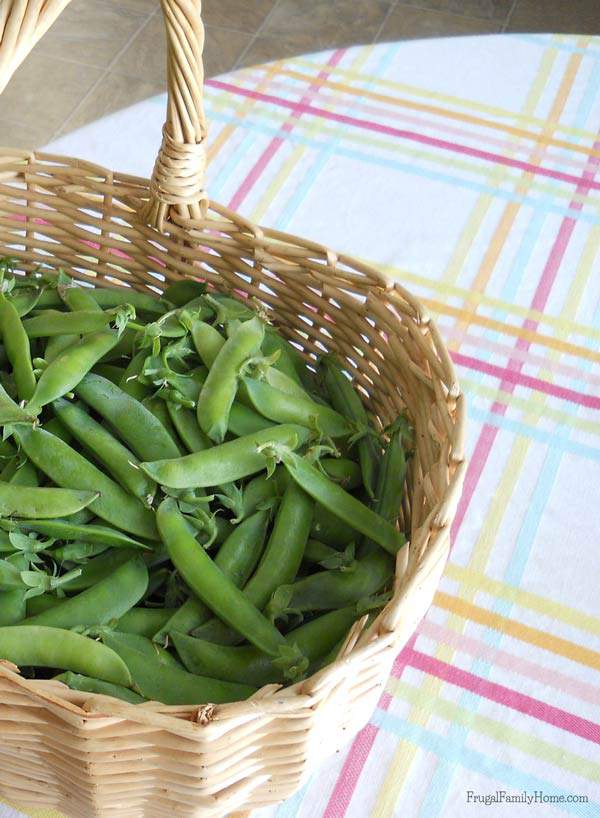
Companion Planting with Sugar Snap Peas
If your garden space is limited you can plant other plants along with the sugar snap peas. Some vegetables that grow well alongside peas are radishes, spinach, lettuce, and other early greens.
Cucumbers and potatoes are also good companion plants for peas. But try to keep peas away from garlic or onions. They just don’t like to be planted near them.
Growing Peas in Containers
If you don’t have garden space in the ground sugar snap peas can be grown in containers. Keep the plants in full sun and be sure to keep them moist but not too moist. Also, be careful not to let them dry out.
You can grow any of the three varieties of peas in a container. If growing bush peas in a container you probably won’t need any support at all.
But if you’ll be growing the pole variety, you’ll need to grow them near a fence or provide support for them. Support could be a pot with an attached trellis or even a large tomato cage would work. You might even try a few branches or bamboo poles with string laced between them. The peas don’t need too much support, like other vegetables. Just enough for them to hold onto something.
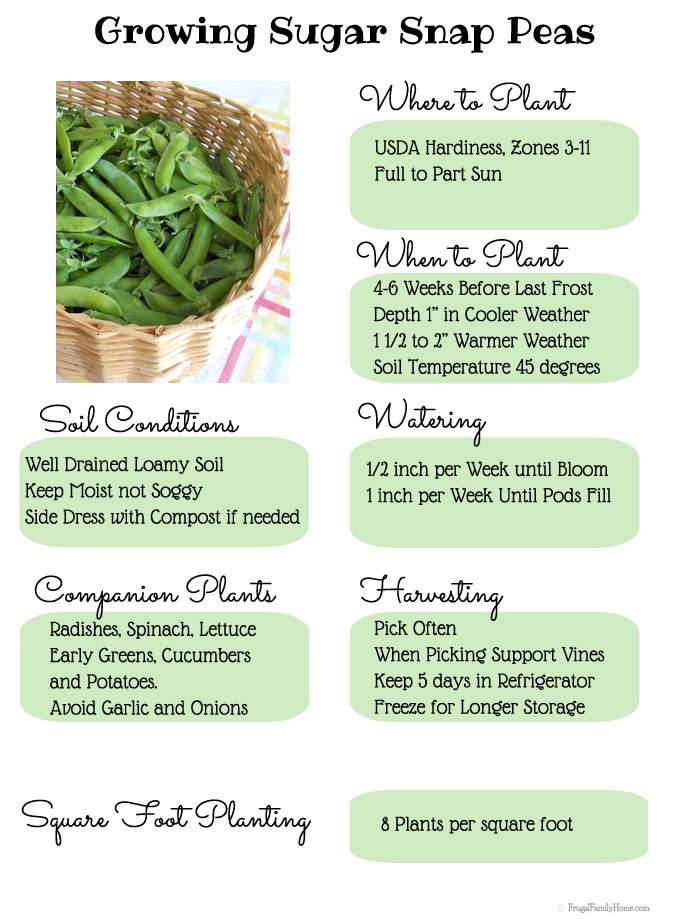
I hope these tips help you to successfully grow peas. They are a delicious to eat, raw or cooked. We add them to stir fry, cut them up and add them to our salads or just eat them right out of the garden.
If you have any tips to add or have a favorite recipe to share using peas, please leave them in the comments below.
Looking for more gardening ideas? Head on over to the gardening page for more gardening ideas and inspiration.
Make Your Own Pea Trellis with this Easy Tutorial
Dont’ want to deal with a trellis for the peas?
Try growing bush peas instead here’s a guide to show you how.
Get the Companion Plants List
When you join the gardening email list, you'll not only get gardening tips sent to your inbox, you'll also get the companion plants list too.

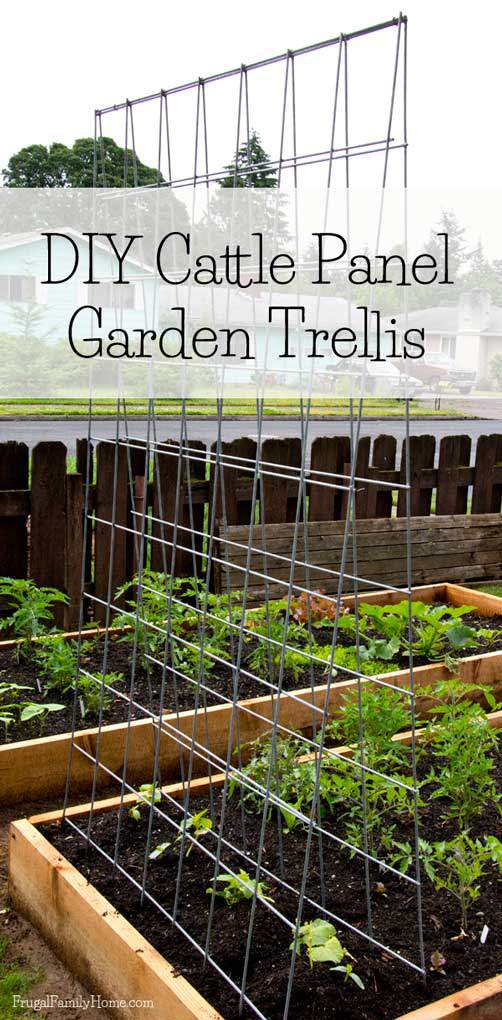
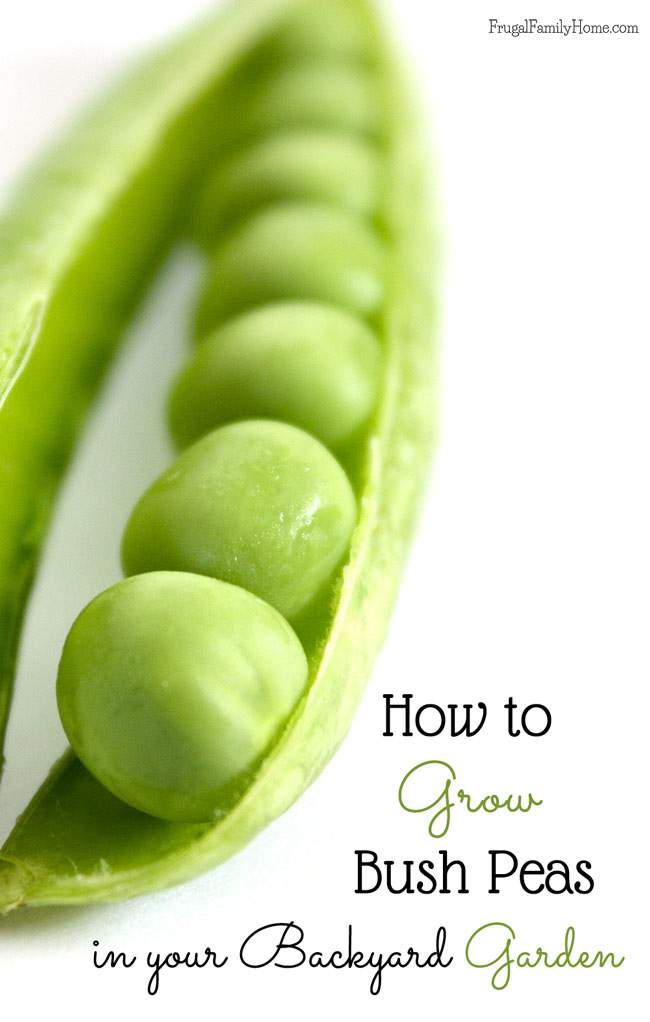

Thanks for sharing these tips, Shelly. I had no idea that peas liked to grow in cooler weather. 🙂
The first year I planted peas, I didn’t know that either, Sandra. It was a very bad year for our peas, trying to grow in the middle of the summer heat.
Now I know what’s wrong with my peas! I planted way too late.
Sue, sorry to hear your peas didn’t do well, at least you’ll know for next year.
Dear Shelly,
Thanks for this very interesting post
I am a French gardener and I would like to know what is this beautiful variety with purple pod ?
Best regards
Aurelien,
I believe it’s called a Purple Podded Pea.
I think the purple flowered peas are the dwarf gray sugar pea. I grew them this summer, 5 plants in a pot with tomato cage they kinda did get tall. But a good flavor. I kept eating them as I was picking them as a snack lol..
Thanks for the post. I learned to continuously plant new seeds to keep the harvest going and not to water too much! I live in central Florida so mine are growing during our “winter” months. We rarely bring them home from our community garden because they are so delicious we gobble them up after picking straight from the vine!
Anissa, I’m glad you found the post on sugar snap peas to be helpful. Yes, peas don’t like soggy feet. 🙂
How nice you can grow in the winter months. Everything too cold right now to grow here but soon it will warm up. We have about two months before we can plant.
Would peas make a good living fence? Will it stay green year round? I have a post and wire fence and want to plant a vine that produces something. I’m in southeast Texas if that helps.
Brandi, The peas will die off with the heat. They thrive in cooler temperatures but once it hits 70 degrees consistently they will die. So unless you have mild temperatures they would only last during the spring time. But you could plant peas in the spring and when they die off plant green beans to fill in. The green beans will stay green until winter sets in. Maybe that would be a good solution?
This is a wonderfully helpful post. I appreciate the information on companion planting. Thank you, Shelly!
Your welcome, Bev.
Hi Shelly,
I love in the Charleston, SC area, and we’re in zone 8B. Our local home improvement store no we has live starter snap pea plants for sale. I would normally “snap” these right up to jump start my season, but our weather here is still in the 80’s and 90’s during the day, and still 70+ degrees at night. If I purchase them, how can I keep them alive until it’s time for them to thrive?
Leena, I’m not sure, do you have a shady place they can hang out in until it cools down? I know here the peas don’t do well when it’s that hot and will usually die off. But maybe keeping them in a shady area might work.
We are getting so excited to start planting our snap peas this month. We start ours in containers in the garage where it is a little warmer than outside.
Love your cattle panel trellis. That stuff is so versatile. I seen some use it as tomato cages too. might have to give that a go this year.
I had to go away for an extended period and my peas weren’t harvested. Can I use the peas that have dried in the pod in cooking? Or can I save them to plant next year? I hate to see them go completely to waste. Thanks!
I would keep the dried peas for planting next year. Take them out of the pod and store them where they will stay dry and you should be able to plant them next year. Sorry you didn’t get to enjoy eating them.
Thank you!
You mention that planting garlic with snap peas isn’t a good idea. What happens if you do, will they prevent each other from growing or will the garlic change the flavor of the peas?
Morgan, there are plants that are good companions and some that aren’t. I think the plants (garlic and peas) just won’t grow as well as if they were grown apart. Like when I had my raspberries near my strawberries. They do ok but not great. Now that I’ve moved them apart, they both produce better. I hope that helps.
Shelly, by growing apart, do you mean just not planting them next to each other, or would that also mean in a close proximity? For example, if I have onion and garlic in one raised bed and peas in the other raised bed (which is about 2 feet away), is that bad too?
Maja sorry I wasn’t clear on that. I meant not to plant them side by side or right next to one another. Having them in separate beds is good. That is what I do. I hope that helps.
Yes, thank you! No worries, just wanted to make sure. I tend to overthink everything:)
Aside from spring, most gardeners, regardless of where in the country they live (colder or warmer), get to plant a second round of these crops in the fall. Specifically, the perfect time to plant snap peas is in late summer, at least 8-10 weeks before the first frost in your region.
Iris, thanks for sharing your fall gardening tip, I appreciate it.